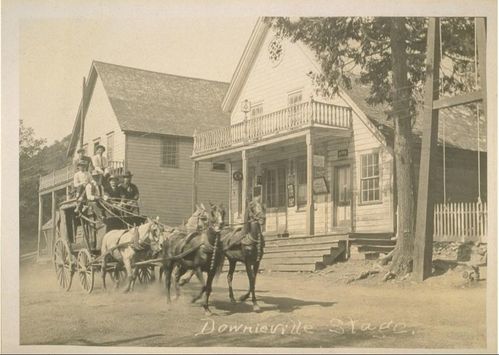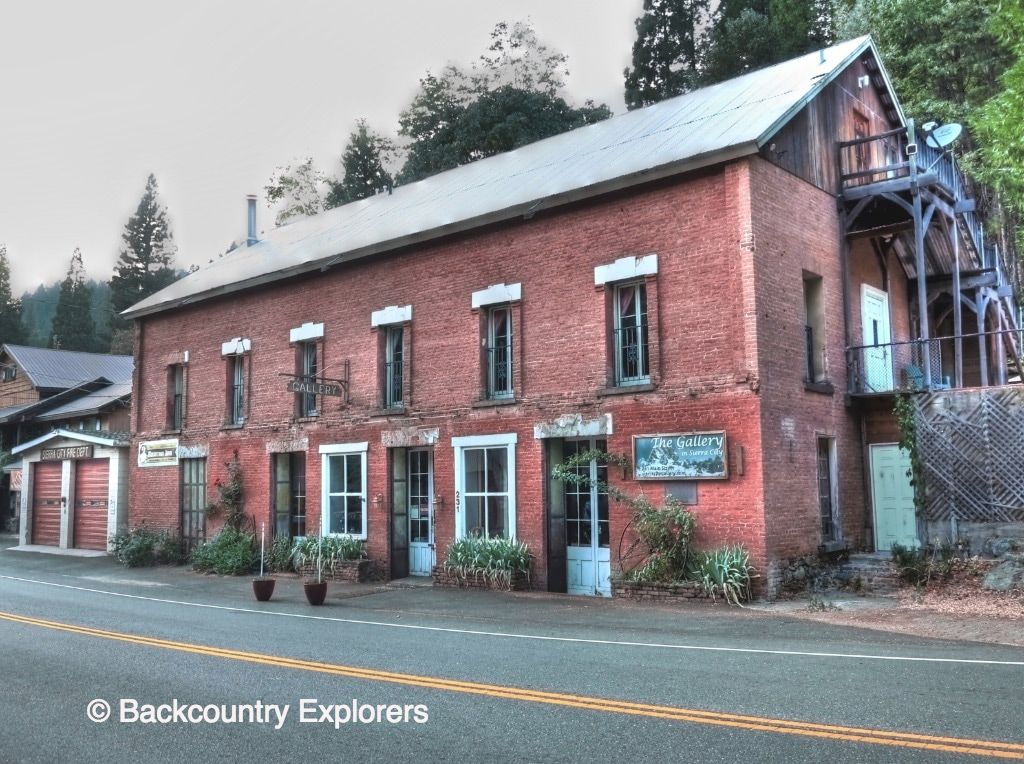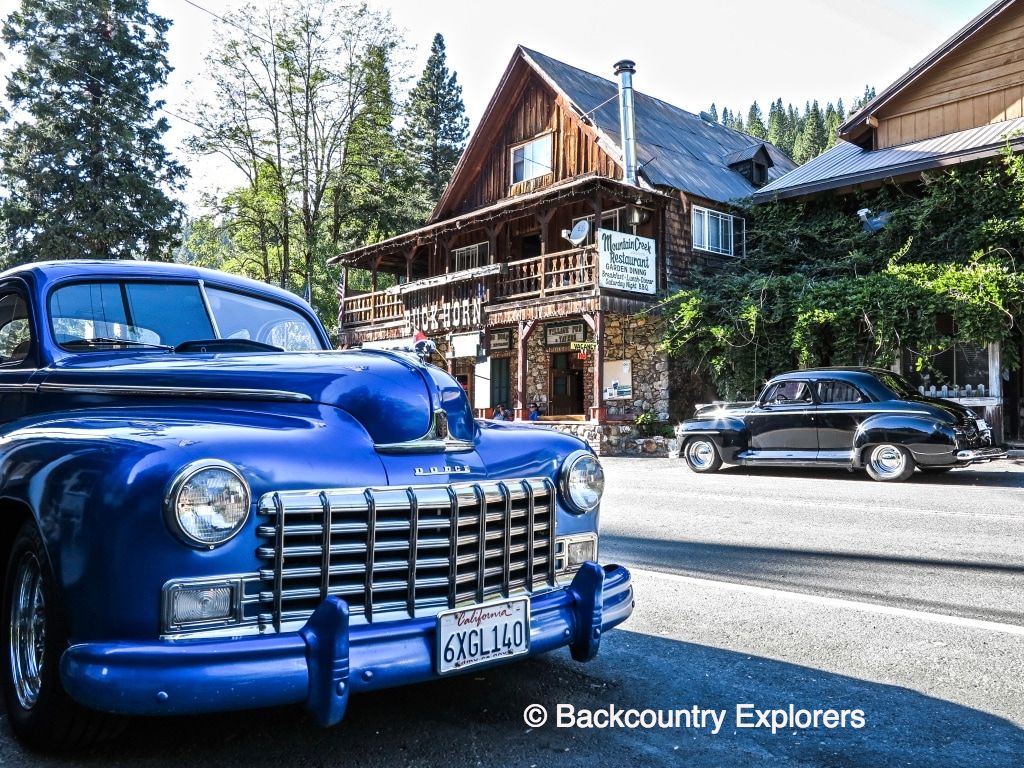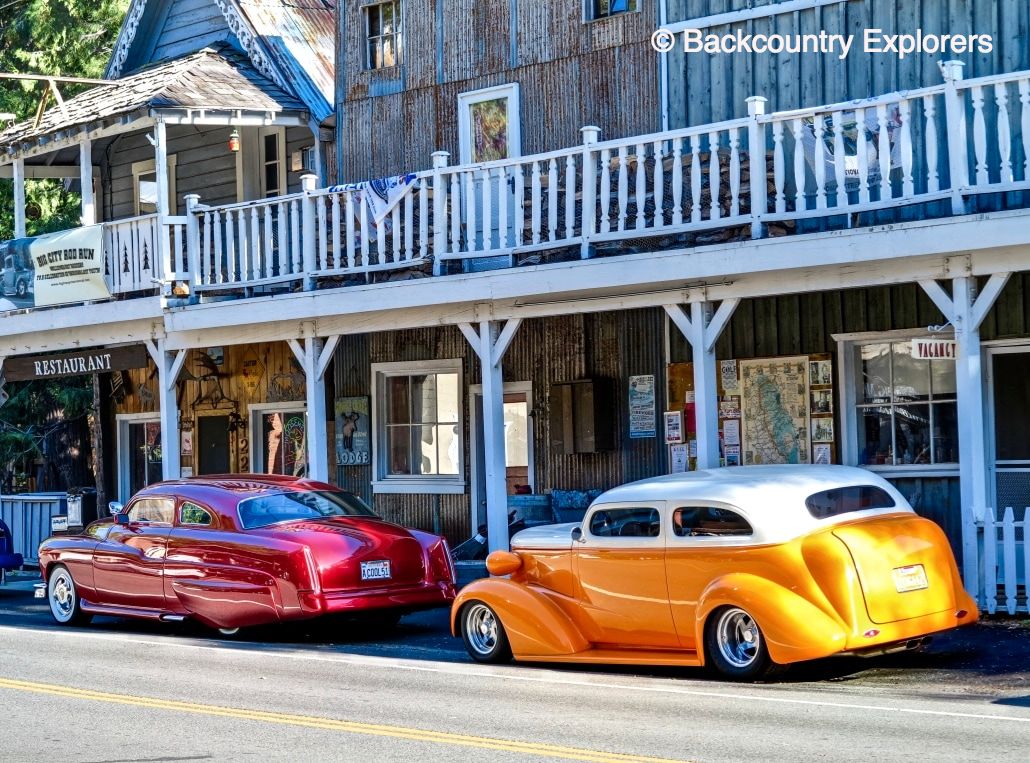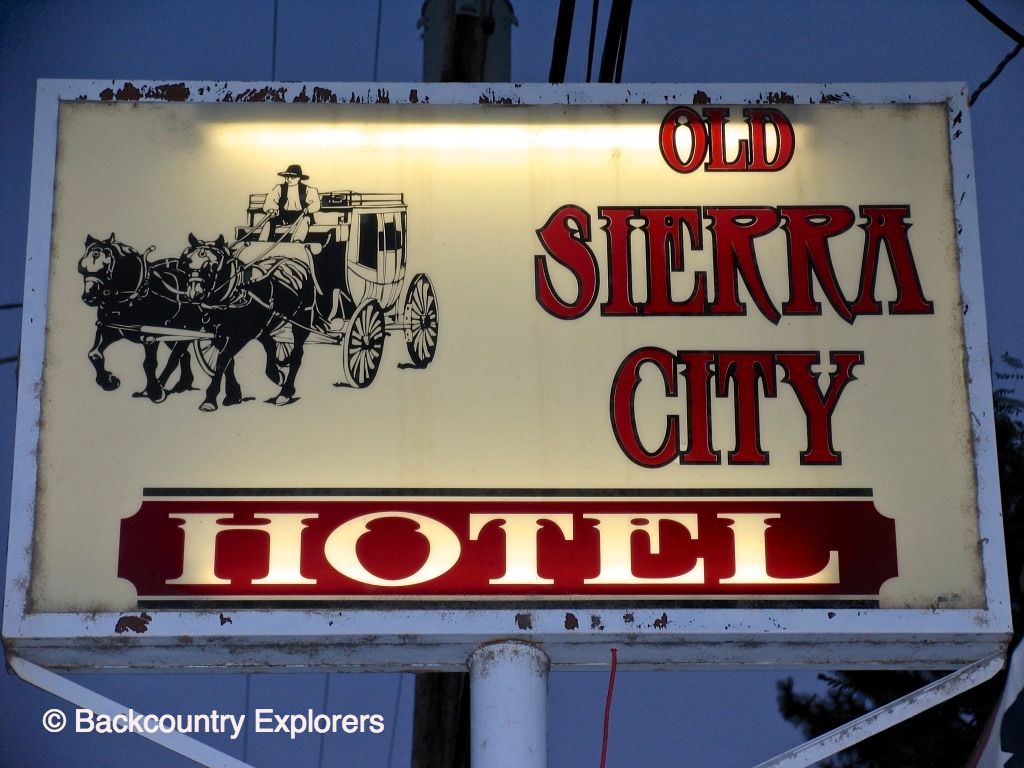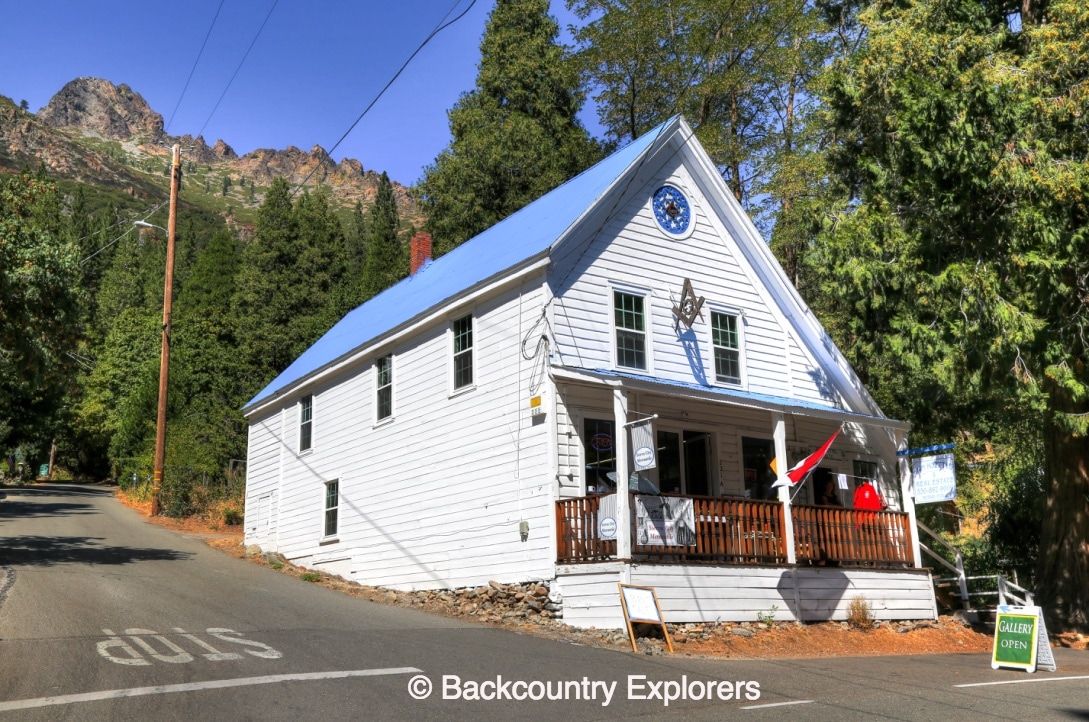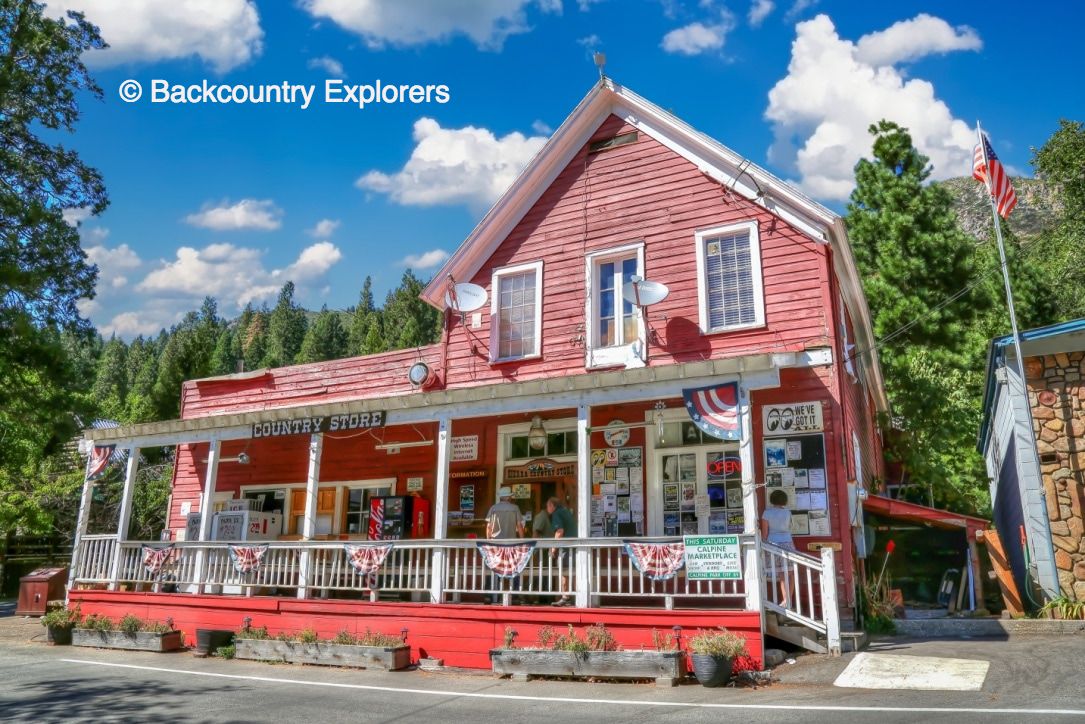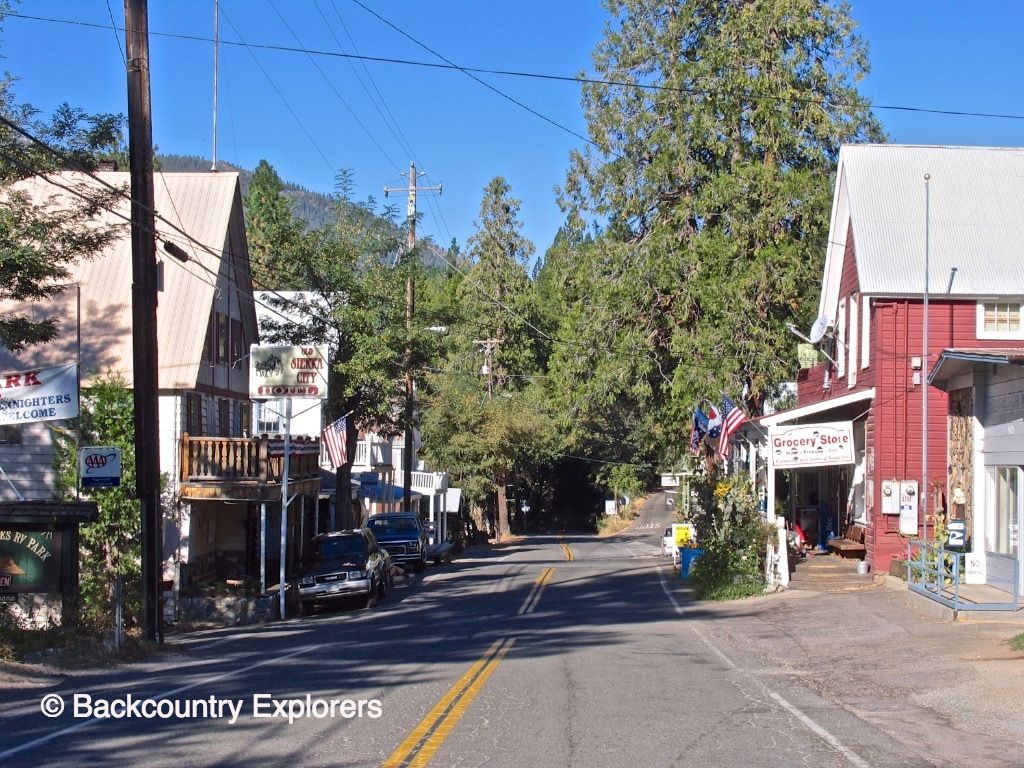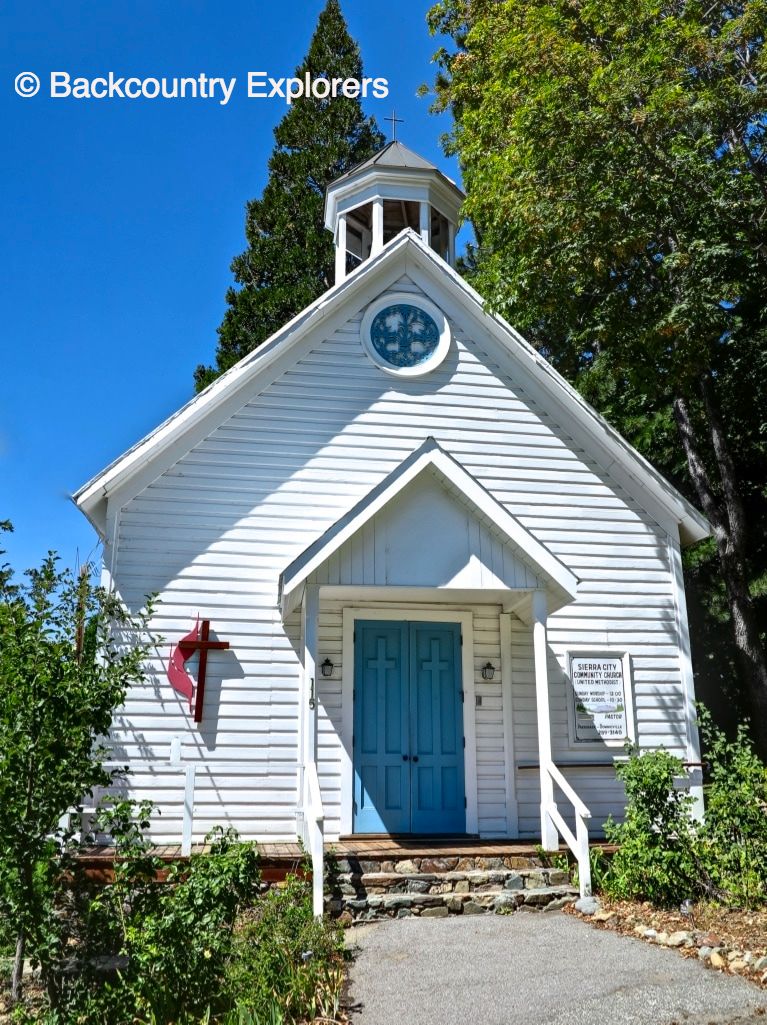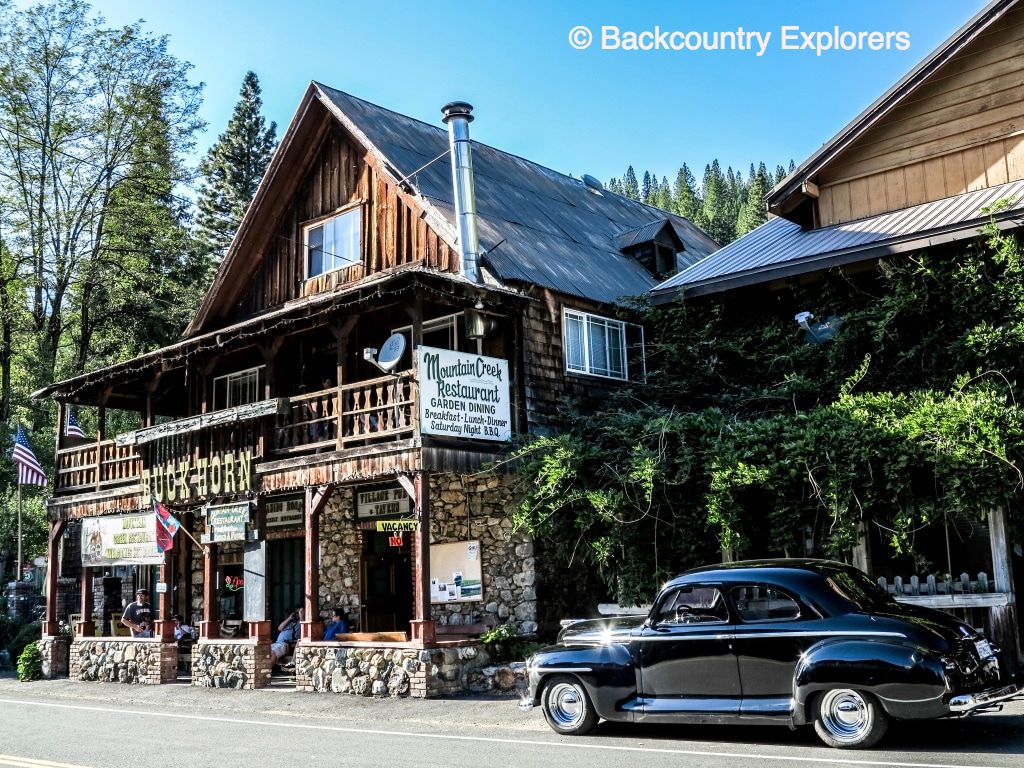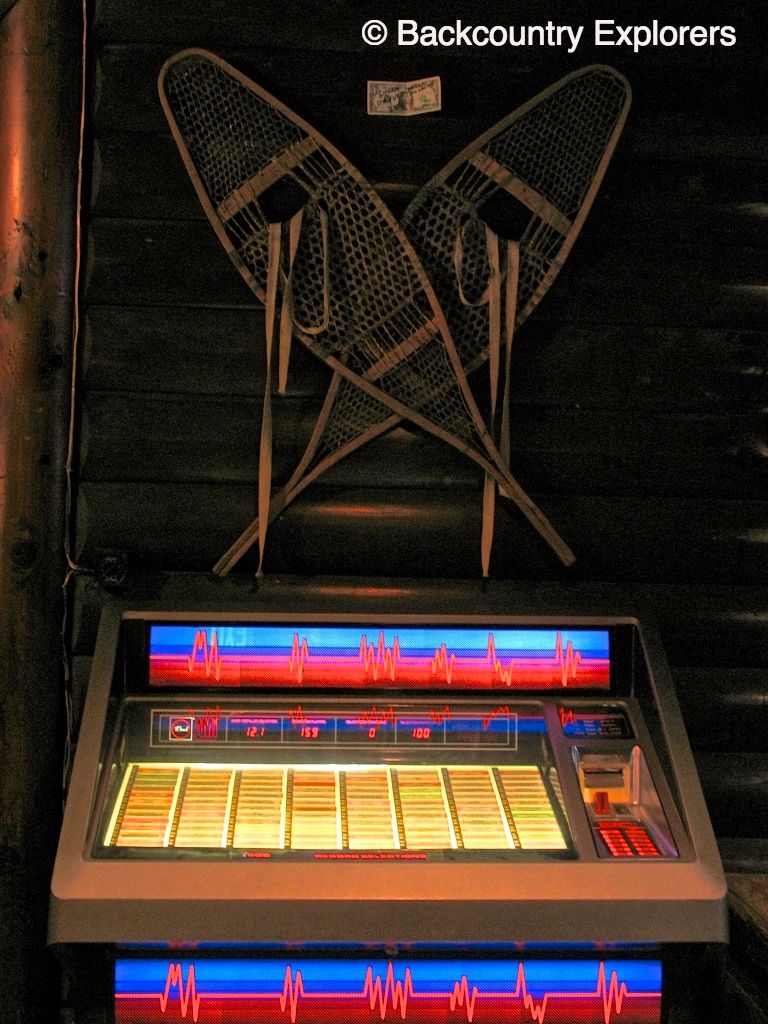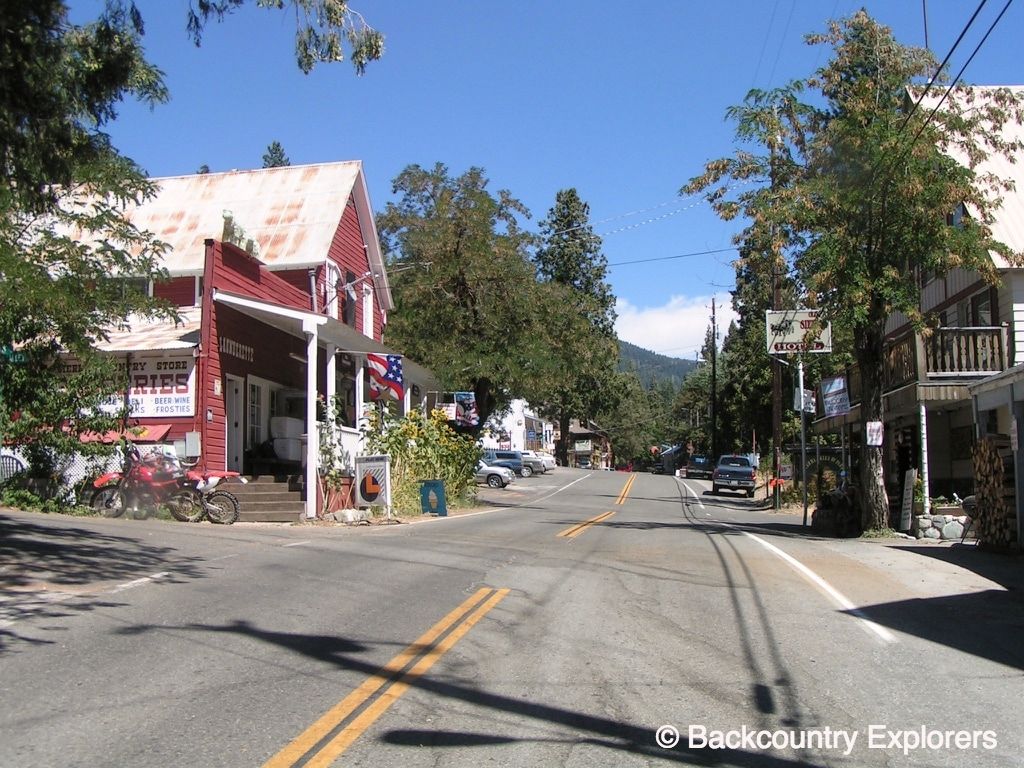Sierra City, California
|
Twelve miles up the North Yuba River beyond Downieville lay the town of Sierra City at the base of the Sierra Buttes. The town owes its existence to Philo A. Haven and Joseph Zumwalt who were the first white men to arrive in the area in spring of 1850. Though many signs of Indians were found along the river Haven and Zumwalt were the first to prospect the area. Soon a camp was started at the site of the current town. Later in 1850, a man named Murphy has generally been given credit with discovering the quartz ledge where the site of the Sierra Buttes mine was later located. Within the next two years the mountains were riddled with miles of tunnels and employing a large work force.
By 1852 over twenty mule powered arrastras were crushing ore up and down the mountainside. During this time Sierra City consisted of two large buildings, a bakery, and several gambling houses and saloons. The mines on the buttes were at close to 8,000 ft. and supplies were brought up by mules and sleds at great effort. The mines of the Buttes were famous for their large nuggets of gold. The Monumental Mine was one of the best for producing incredible nuggets; a 1,596 ounce nugget in 1860 and a 1,893 ounce in 1869. The gold production for the area estimated at $30 million. |
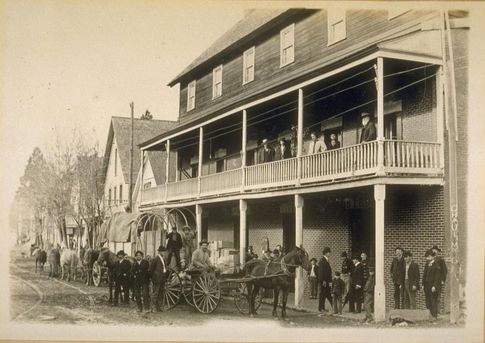 Wells Fargo Express building circa 1900. Courtesy Kentucky Mine Museum.
Wells Fargo Express building circa 1900. Courtesy Kentucky Mine Museum.
In the winter of 1852-1853 the snows stored on the buttes were quite heavy. That winter the town was completely demolished by avalanche and the crushing snows. Fortunately most of the town’s residents were further down mountain due to the scarcity of food. The devastation was so complete the town did not rebuild for several years. Eventually each mine had it own little settlement with storehouse and saloon until finally in 1858 a permanent town got a footing in part do to the Doyle & Co. saw mill erected earlier in 1855. The first post office was established in Sierra City in 1865 with a S. M. Wilcox appointed as postmaster.
Wells, Fargo & Co. established an express office in 1871 appointing Mr. Busch as their agent. On the four of July the cornerstone of the Busch building, which housed the Wells Fargo express and the E Clampus Vitus society as well as a meat market. The Busch building cost $16,000.00 to construct. The brick used in the building were made in Sierra City. The first floor held the Busch & Heringlake’s general merchandise; the second was a personal residence; and the third was a large public hall where E Clampus Vitus among others met. This floor also had a spring dance floor popular at the time. The top story of the building was lost to fire in 1948.
Wells, Fargo & Co. established an express office in 1871 appointing Mr. Busch as their agent. On the four of July the cornerstone of the Busch building, which housed the Wells Fargo express and the E Clampus Vitus society as well as a meat market. The Busch building cost $16,000.00 to construct. The brick used in the building were made in Sierra City. The first floor held the Busch & Heringlake’s general merchandise; the second was a personal residence; and the third was a large public hall where E Clampus Vitus among others met. This floor also had a spring dance floor popular at the time. The top story of the building was lost to fire in 1948.
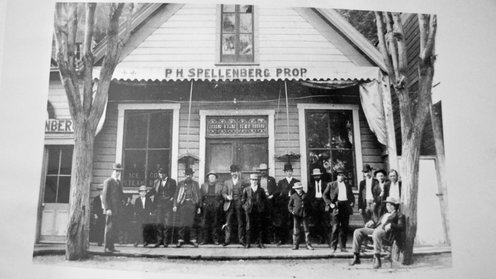 Pat Spellenberg's Saloon Circa 1910 - Courtesy of the Kentucky Mine Museum
Pat Spellenberg's Saloon Circa 1910 - Courtesy of the Kentucky Mine Museum
A telegraph line was constructed from Downieville through Sierra City to Taylorville in1874. The town’s people collectively paid one thousand dollars for its construction along with five hundred dollars being paid by the Sierra Buttes mining Company. Mr. Busch was the operator. By this time a stage also ran from Downieville to Sierra City three times a week, connecting with Forest City.
Several breweries were operated at various times in town with one of the most famous being the Sierra Buttes brewery which was erected in 1881. Bottles for the breweries were brought from Scotland as ballast in the holds of ships.
Several breweries were operated at various times in town with one of the most famous being the Sierra Buttes brewery which was erected in 1881. Bottles for the breweries were brought from Scotland as ballast in the holds of ships.
